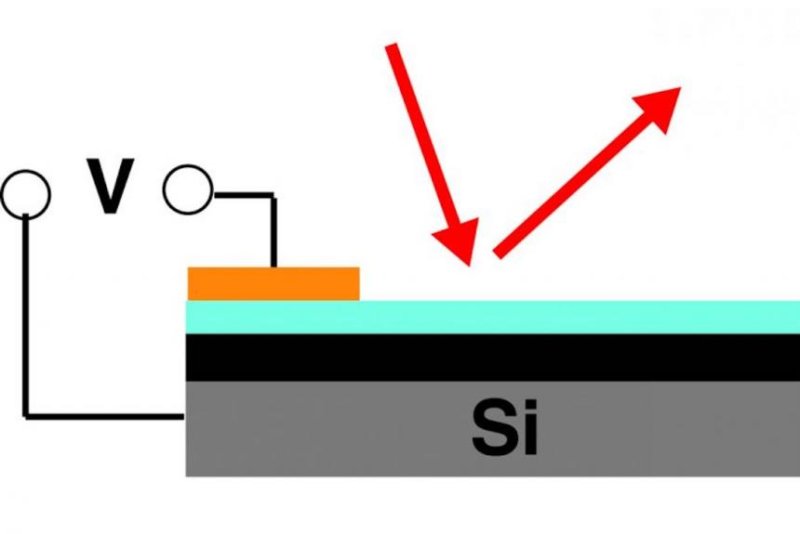Researchers used electric voltage to alter the refractive index of a new class of semiconductor materials, effectively controlling light with electric fields. Photo by NCSU
May 25 (UPI) -- Scientists have found a new method for manipulating light using electric fields.
"Our method is similar to the technique used to provide the computing capabilities of computers," Linyou Cao, an assistant professor of materials science and engineering at North Carolina State University, said in a news release. "In computers, an electric field is used to turn electric current on or off, which corresponds to logic 1 and logic 0, the basis of binary code."
Similarly, Cao and his colleagues say electric fields can alter the intensity and shape of light, revealing novel patterns that could have applications in the fields of virtual reality, projection, animation or camouflage.
The technique is more easily described than executed. Photons don't have a positive or negative charge, so they're not easily controlled by electric fields. Traditionally, scientists control light by manipulating the refractive index of materials. A refractive index describes how a material interacts with light -- how it absorbs, reflects, scatters and transmits light.
"Unfortunately, it is very difficult to tune refractive index with electric fields," Cao said. "Previous techniques could only change the index for visible light by between 0.1 and 1 percent at the maximum."
Researchers at North Carolina State discovered a new class of materials, called transition metal dichalcogenide monolayers, that posses refractive indexes more readily manipulated by electric fields.
"We changed the refractive index by applying charge to two-dimensional semiconductor materials in the same way one would apply charge to transistors in a computer chip," Cao said. "Using this technique, we achieved significant, tunable changes in the index within the red range of the visible spectrum."
Scientists altered the refractive indexes of the novel materials by as much as 60 percent. Changes in electric voltage can alter the refractive index of the semiconductor material with dynamic speed, registering billions of changes per second.
Researchers believe their work could be used to improve pixelation technologies used in computer screens. They described their breakthrough in the journal Nano Letters.
"This is only a first step," Cao said. "We think we can optimize the technique to achieve even larger changes in the refractive index. And we also plan to explore whether this could work at other wavelengths in the visual spectrum."















